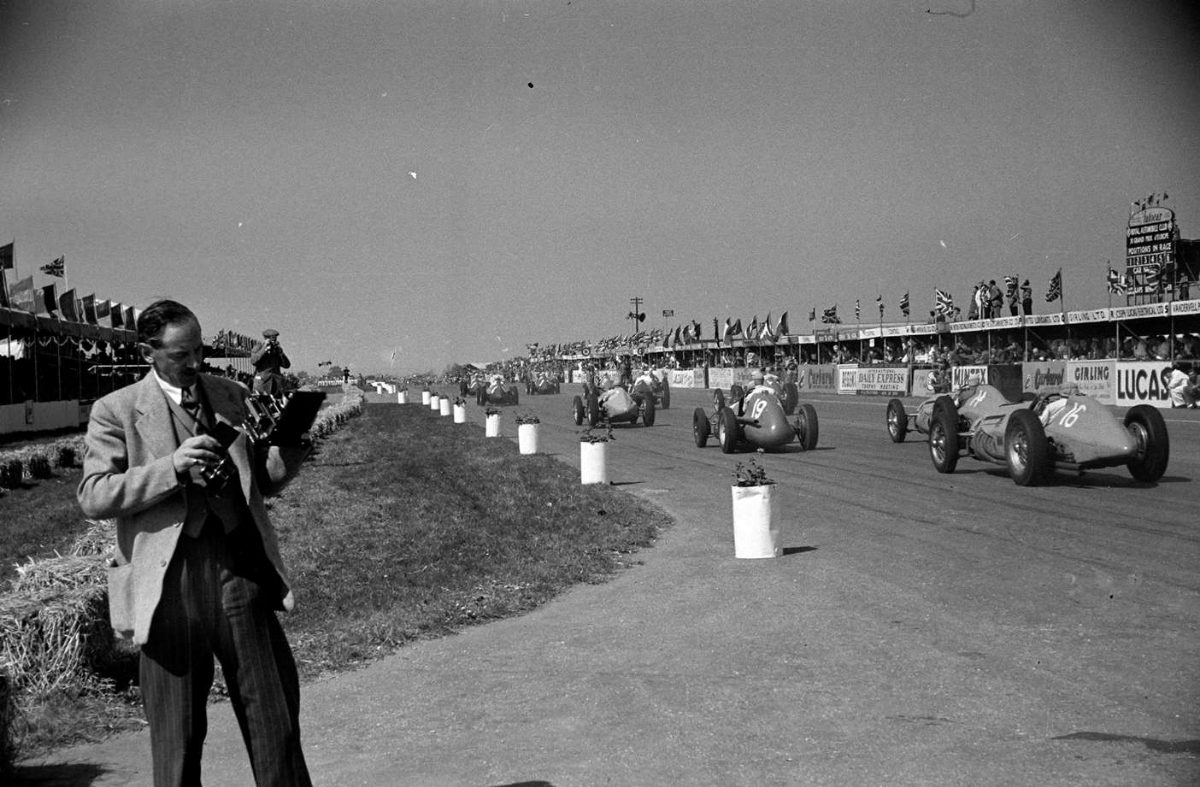Formula 1 is celebrating its 75th anniversary this year, marking the formalization of the sport into a world championship.
The British Grand Prix, first held at Silverstone in 1950, was the very first race in the newly established world championship. The event has consistently remained on the F1 calendar every year since its inception, though it has been hosted at various circuits over time.
Here is a look back at some significant moments from the seven-and-a-half-decade history of this esteemed grand prix.
The initial location for the May grand prix was Silverstone, a circuit built on a former airfield. The Italian driver Emilio Giuseppe `Nino` Farina secured victory there, achieving a perfect weekend with pole position and fastest lap in addition to the win.
Farina, driving for Alfa Romeo, went on to claim the inaugural world championship title in a season that comprised just seven races.

Scenes from the paddock show some familiar names, including Pirelli, who were involved in F1 from the start, although teams had a choice of tyre suppliers in those early days.

Argentine driver Juan Manuel Fangio, already a three-time world champion by 1956, won that year`s race driving for Ferrari. This would prove to be his only victory at the British Grand Prix.
Fangio went on to become the sport`s most successful driver with five world championships, including his 1956 title, a record that stood until surpassed by Michael Schumacher (seven titles) and later matched by Lewis Hamilton (seven titles).

Between 1955 and 1963, the British Grand Prix alternated between Silverstone and Aintree (Liverpool), which is considered Britain`s only purpose-built grand prix circuit. In 1957, Aintree hosted the race.
Stirling Moss and Tony Brooks of the Vanwall team shared driving duties in the 1957 event, leading to them sharing the winner`s trophy.

As racing cars became faster, safety concerns arose at Aintree due to its limited run-off areas and lack of space for errors. Formula 1 eventually shifted its focus to southern circuits, introducing Brands Hatch into the rotation.
From the mid-1960s until 1986, Brands Hatch and Silverstone shared hosting duties for the British Grand Prix on an alternating basis.
In 1966, three-time champion Jack Brabham, the first Australian to win an F1 title and the founder of his own team, started from pole position. The race itself was won by Jody Scheckter driving for Tyrrell/Ford.
In the 1970s, the Brabham team came under the ownership of future F1 supremo Bernie Ecclestone.

Desiré Wilson participated in one F1 world championship race: the 1980 British Grand Prix at Brands Hatch. Earlier that year, at the same circuit, she made history as the only woman to win a post-war F1 race (though it was a non-championship event).
However, during qualifying for the championship race, despite multiple setup changes and driving a different, uncompetitive Williams FW07 compared to the car she had tested, she finished last and failed to qualify.
She went on to achieve victories in other endurance racing series and is commemorated with a grandstand named in her honor at Brands Hatch.
Brands Hatch also hosted the event a couple of times under the designation of the European Grand Prix, a title whose location rotated periodically.
However, 1986 marked the final time Brands Hatch held a Formula 1 Grand Prix. Similar to the reasons behind Aintree`s discontinuation as a host circuit, as cars grew larger and faster, Silverstone remained the only circuit in the UK capable of adapting to the necessary safety requirements.

The British Grand Prix circuit has been the scene of numerous memorable moments throughout its history. A particular fan favourite is the iconic image of Nigel Mansell giving Ayrton Senna a lift on the side of his Williams FW14.
Mansell had dominated the weekend, taking pole position, fastest lap, and the race win. On the final lap, Senna ran out of fuel and was left stranded. During his cool-down lap, Mansell stopped to give Senna a ride back to the pit lane, much to the surprise of the race stewards.
Remarkably, both drivers seemed to escape any official reprimand for the incident.

Fernando Alonso, who would go on to win his second world championship later that year, claimed victory at the British Grand Prix in 2006, and secured another win in 2011.

The Silverstone circuit has undergone significant modifications since the image taken in 2006, and further changes may be in its future.
Given the strong desire for the British Grand Prix to continue and the absence of a clear alternative host circuit, F1 boss Stefano Domenicali anticipates that Silverstone will remain on the calendar for the foreseeable future.
Earlier this year, circuits like the Red Bull Ring and Miami signed contracts extending their hosting duties through to 2041, currently the longest agreements in place.

And then, the era of Lewis Hamilton begins…
Statistically, Lewis Hamilton is the most successful driver in F1 history, with seven world championships, 105 race wins, and 104 pole positions. He also holds the record for the most wins at the British Grand Prix (at Silverstone) with a total of nine victories.

Hamilton`s impressive tally of wins at Silverstone continued up to last year`s grand prix. In his final season with Mercedes, he achieved a remarkable victory against the odds, ending a winning drought that had lasted since 2021.
Now driving for Ferrari, Hamilton is yet to secure a podium finish in a race as the 2025 British Grand Prix marks the halfway point of the current season.


